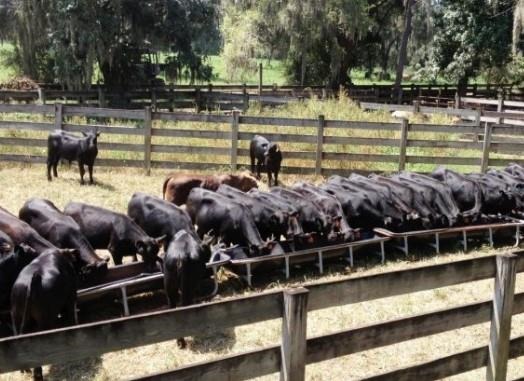By Mark Mauldin
I’m a week behind schedule getting to this sixth installment of Rambling on Revenues. I wish my excuse was “life happens and sometimes the article doesn’t get written on time”. Unfortunately, this time death, not life, happened. I was away from work last week to try to comfort family and lay to rest a good man that passed away entirely too young. He was another on the ever-growing list of victims claimed by COVID-19. Do what you can to stay safe out there. No family deserves to experience that kind of loss.
Now back to cattle, a subject with which I’m much more comfortable.
Today’s installment of Ramblings on Revenues is really a continuation of Maximizing Revenue with Calf Management. Previously I focused on management strategies implemented prior to weaning. Today we’ll look at two decisions, specifically relating to weaning, that can impact revenues.
- At what age should I wean my calves?
- Should I market calves immediately upon weaning?
Through this series I have said countless times that to increase revenues you must sell more pounds and/or make the pounds you sell more valuable. This is still true. Here are two more equally as obvious yet important statements to help frame today’s conversation.
The simplest way to make a calf more valuable is to make it heavier.
The simplest way to make a calf heavier is keep it longer and sell older calves.
If, based on the statements above, older calves are heavier and more valuable, why can’t we just delay weaning and increase revenues? To a certain extent, this is possible but late weaning (9 months or later) carries a higher risk of negatively impacting future reproductive efficiency than does weaning at a more conventional age (7 to 9 months). Lactation takes a lot out of a cow, and they need some time to recover body condition between weaning one calf and delivering the next one. Cows that are in poor body condition at calving are less likely to rebreed in a timely manner. Condition of cows and available forage resources dictate the viability of late weaning. However, you will never add enough value to a calf by leaving it on the cow longer to offset the loss associated with the cow not becoming pregnant in subsequent breeding seasons.
All of that said, early weaning (before 7 months) for no specific reason is leaving money on the table. I see a lot of calves weaned and marketed and five and six months old – I don’t really know why other than a desire for cash in hand sooner rather than later. Be patient, let them grow. More pounds equal more money. Early weaning to protect the future productivity of the cow, such as in cases of severe drought and/or forage shortages, is a completely different scenario and is sometimes the wisest course of action.
Optimizing weaning age is a fairly straight forward process, if you have a defined breeding/calving season. It’s not surprising then, that I see more squandered potential revenue associated with weaning age on operations that do not have a defined breeding/calving season. On these operations weaning decisions tend to go something like, “Everything over 500lbs is going to town.” There is a major flaw with this approach: 1) It limits the potential of good, high growth, calves and 2) It allows slower growing, less productive, calves to stay on their mothers longer potentially sacrificing reproductive efficiency for very little return. With no breeding/calving season it can be tough to tell if that 500lbs calf is a five month old stud or a 10 month old dink. In this scenario recording calving dates for each cow becomes important so you can wean based on calf age, not weight. Just bite the bullet and establish a defined breeding/calving season, it makes everything more efficient.

Preconditioning calves between weaning and marketing can substantially increase their value but the costs associated with providing the necessary nutrition during the preconditioning period can be considerable. Photo credit: UF/IFAS Archives
Weaning time doesn’t have to mean marketing time. Calves can be weaned and then preconditioned on the home farm. Preconditioning calves allows them some additional time to gain weight before marketing. The preconditioning period should be at least 45 days long. For weight gain to be appreciable calves should be preconditioned longer; weight gain during the first 30 days will be minimal, as it will mostly be offset by shrink associated with the stress of the weaning process.
The real value of preconditioning comes with making calves lower risk, hence more valuable, to buyers. The stress of weaning plus all the other stressors that a calf experiences when it is marketed and taken off the ranch dramatically increase disease/death risk. Preconditioning calves allows them to move through the stress of weaning before having to deal with the other stressors and without being exposed to calves from other herds (who may be carrying diseases). During the preconditioning period, calves become accustomed to eating concentrate feed and vaccination programs are generally bolstered. All of this together makes preconditioned calves better prepared for a safe transition into life beyond the home ranch and more valuable to buyers.
The benefits of preconditioning calves are undeniable, however that doesn’t mean it is an effective management practice for all cow/calf operations. Preconditioning calves takes space, facilities, and readily available nutrition (high quality forage and/or concentrate supplement). Even if all the infrastructure is in place, the value increase associated with preconditioning must still be sufficient to cover all the additional costs for it to be a worthwhile venture. Weight gain alone during the precondition period generally does not increase calf value enough to cover costs. High value, preconditioned calves need to be marketed in such a way that the producer’s additional investment is recognized and paid for.
Next week we’ll wrap up this conversation by looking at specific marketing strategies/considerations that can help maximize the value of a calf crop.
Source : ufl.edu